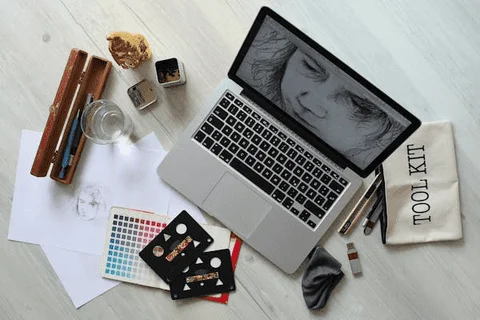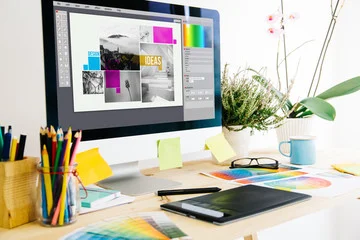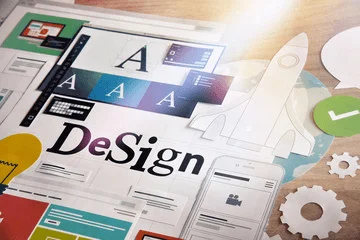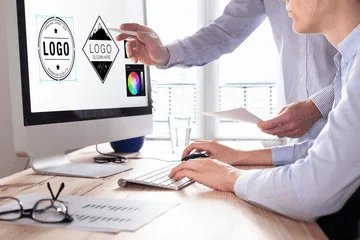
Whether you’re looking to create eye-catching marketing materials, or working on a project, graphic design is an invaluable tool. But what if you don’t have a formal background in design? Don’t worry! we’ll share essential tips that will help you create stunning visuals without the need for extensive design training.
A mistake many designers early in their journey make is to put too much on their work board. Too many colors, too many fonts, too many elements. This creates overabundance and confusion in the work and does not allow the design to breathe.
So, ask yourself: what would my work look like if I removed this or that element? Would I benefit from it? Of course, you would’nt go and remove key elements for the final design, but elements with collateral functions would.

Matching characters is a really high-performing way to help make your work look professional.
One rule you might follow is to match a sans-serif (no thank you) font like the header font that is open sans with a serif (with thank you) font like the paragraph font that is clarendon.
Here are two online resources for you to discover and test the right font pairings:
Using spaces properly means first of all having a good eye for graphic composition. You must find the right arrangement of elements so that text information or any other visual element is easy to read and effective in communication.
Generally, there are 2 types of white space:
- Active white space: this ensures a better-performing structure and focuses attention on the content. It is usually intentionally created (or left) so as to demarcate and distinguish one element from another.
- Passive white space: this is the default white space left at the edges of graphics or between content in order to make it dutifully readable.
White space exists for a very specific reason. It serves to facilitate the graphic and/or content analysis process. The human eye can perceive an organized and clean layout differently from a cluttered workspace.

On the Web you have an average of 8 seconds to capture the user’s attention.
So, it is best that the landing design is effective and not at all shy. Color is one of the best ways to do this. Instead of choosing a range of soft, light colors, try using something grittier.
Contrasts such as black, or white as a background of bright, solid colors can be great instant communication formulas.
If your content consists of little text, bright colors can be a big helping hand in capturing the user’s attention.
Appropriate images in line with the text content are a turning point in capturing the user’s attention.

To make the focus more dynamic you can insert text on the image (of course we are talking about very few words) and (if you are using Photoshop) benefit with blending methods just like in the following image, where I have intentionally applied the “vivid light” blending method to the text layer that is above the image layer.
But of course, this is just one of the many possible ways to make a text on an image dynamic: there are in fact also other effective blending methods for this goal such as “Overlay” or the clipping mask function, but I will make a tutorial about that so stay tuned.
If you’ve been doing graphic design for a while, then flat design () represents a reliable and safe friend for you. Minimal style, the use of flat, sharp hues, clear and immediate fonts, are the main features of this design style. Flat design represents a reliable and safe friend for you.
External elements such as textures or patterns can be part of this style as long as their use is purposeful and not at all invasive but only collateral.
The alignment of the text in a graphic (titles, subtitles, paragraphs, slogans, quotes) and graphic elements such as boxes and should never be left to chance. Always seek centrality if you are designing something immediate and concise and emphasize with the right size the main word or words of the message you are communicating.
There are also other effective alignment paras such as “justify” but it often depends on the amount of text (in the latter case it must necessarily be rich) and the elements that make up the layout, so they are often choices related to layout and therefore to design.
This effect, used to create great impact and brightness with a simple and effective design. The basic idea is to have very short text that you want to focus on (it could even be a logo or slogan) and enclose it within a bordered box of a color that contrasts with the background.

Design is something that lives and breathes. Rules exist, they are important but not untouchable. Not all of them, at least. Try making your own graphics, experiment, make mistakes, compare and try again. Try again if you are not particularly satisfied. Don’t be happy about something you achieved right away even though it might be something good. Continually venture into new challenges, check out platforms like Behance to compare yourself with the work of international design and advertising artists, look for new ideas and try to reproduce them by adding your own.
Are you new to graphic design and not interested in becoming a professional graphic designer? Start following this decalogue then let me know how it goes and we’ll see about adding lots of other good tips. For now, stay tuned for more.

Leave a Reply